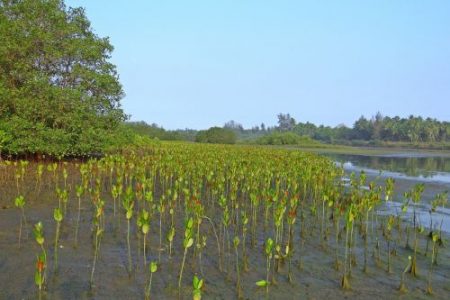Restoring Sri Lanka’s mangroves

In 2015, Sri Lanka declared that they would protect all their mangrove forests, in order to restore the precious ecosystem services that they provide: carbon sequestration, coastal protection, fisheries support and more. Partnering with two non-profit organisations (Sudeesa and Seacology), the Sri Lankan government has started a programme to protect and replant 35,000 hectares of mangroves. The restoration projects involved some 38,000 volunteers, with women leading the way. Sudeesa also gave women microloans to enable them to buy nets and start fishing businesses, which are in turn more successful due to the mangrove restoration. Read the article here.
However, mangrove restoration has often been conducted poorly, including at many sites in Sri Lanka; a 2017 study found that of 1000-1200ha of mangroves under restoration, only about 200-220 ha (19%) were successful. We must be careful that projects use best-practice methods, taking into account local topography, soil pH and disturbance from cattle, and have local people at the heart of the process.




